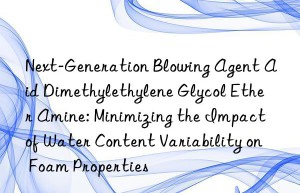
Next-Generation Blowing Agent Aid Dimethylethylene Glycol Ether Amine: Minimizing the Impact of Water Content Variability on Foam Properties
Next-Generation Blowing Agent Aid: Dimethylethylene Glycol Ether Amine – Taming the Water Dragon in Polyurethane Foam Production By Dr. Alan Reed, Senior Formulation Chemist | October 2024 Let’s talk …
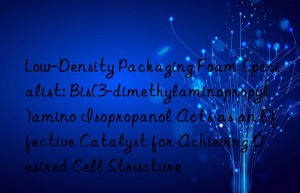
Low-Density Packaging Foam Specialist: Bis(3-dimethylaminopropyl)amino Isopropanol Acts as an Effective Catalyst for Achieving Desired Cell Structure
The Foamy Alchemist: How Bis(3-dimethylaminopropyl)amino Isopropanol Whips Up the Perfect Bubble Bath in Low-Density Packaging Foam By Dr. Foam Whisperer (a.k.a. someone who really likes bubbles) Ah, …
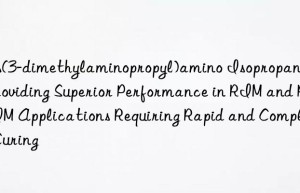
Bis(3-dimethylaminopropyl)amino Isopropanol: Providing Superior Performance in RIM and RRIM Applications Requiring Rapid and Complete Curing
Bis(3-dimethylaminopropyl)amino Isopropanol: The Unsung Hero of RIM & RRIM Curing – Fast, Furious, and Fully Functional By Dr. Eva Polymere, Senior Formulation Chemist Let’s talk about a chemical …
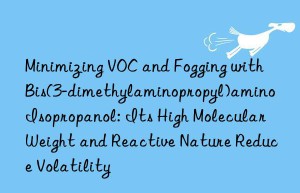
Minimizing VOC and Fogging with Bis(3-dimethylaminopropyl)amino Isopropanol: Its High Molecular Weight and Reactive Nature Reduce Volatility
Minimizing VOC and Fogging with Bis(3-dimethylaminopropyl)amino Isopropanol: A Heavyweight Champion in a Volatile World By Dr. Elena Marlowe, Senior Formulation Chemist 🌫️ Ah, volatile …
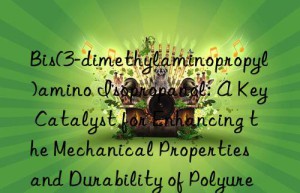
Bis(3-dimethylaminopropyl)amino Isopropanol: A Key Catalyst for Enhancing the Mechanical Properties and Durability of Polyurethane Elastomers
Bis(3-dimethylaminopropyl)amino Isopropanol: A Key Catalyst for Enhancing the Mechanical Properties and Durability of Polyurethane Elastomers By Dr. Ethan Reed – Polymer Chemist & Coffee Enthusias…
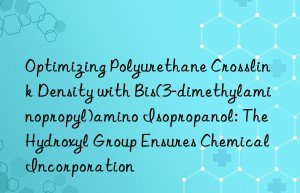
Optimizing Polyurethane Crosslink Density with Bis(3-dimethylaminopropyl)amino Isopropanol: The Hydroxyl Group Ensures Chemical Incorporation
Optimizing Polyurethane Crosslink Density with Bis(3-dimethylaminopropyl)amino Isopropanol: The Hydroxyl Group Ensures Chemical Incorporation By Dr. Linus Polymere, Senior Formulation Chemist at Flexi…
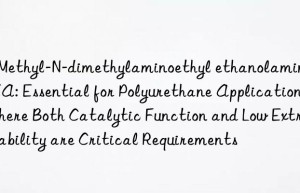
N-Methyl-N-dimethylaminoethyl ethanolamine TMEA: Essential for Polyurethane Applications Where Both Catalytic Function and Low Extractability are Critical Requirements
N-Methyl-N-dimethylaminoethyl ethanolamine (TMEA): The Unsung Hero of Polyurethane Chemistry – Where Speed Meets Stability By Dr. Leo Chen, Senior Formulation Chemist Published in "Polymer Insigh…
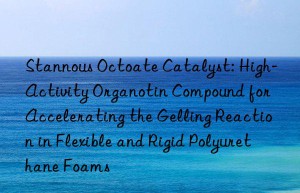
Stannous Octoate Catalyst: High-Activity Organotin Compound for Accelerating the Gelling Reaction in Flexible and Rigid Polyurethane Foams
Stannous Octoate: The "Speed Demon" of Polyurethane Foam Chemistry 🏎️ Ah, polyurethane foams. Whether they’re cradling your back on a lazy Sunday nap or insulating your …

Powerful Polyurethane Gelling Agent: Stannous Octoate, Ensuring Rapid Curing and Excellent Dimensional Stability in Polyurethane Elastomers
🛠️ When Chemistry Meets Speed: The Magic of Stannous Octoate in Polyurethane Elastomers Let’s face it—polyurethane (PU) is the unsung hero of modern materials. From car seats that cradl…

Stannous Octoate: A Highly Efficient Catalyst for the Isocyanate-Polyol Reaction in Two-Component Polyurethane Coating Systems
Stannous Octoate: The Silent Maestro Behind the Scenes of Two-Component Polyurethane Coatings By Dr. Lin Wei, Senior Formulation Chemist at EcoShield Advanced Materials 🔧 A Catalyst That Doesn…



